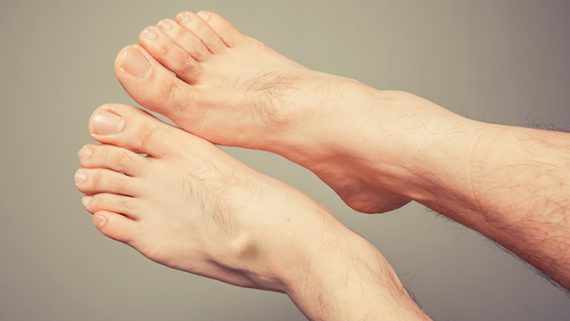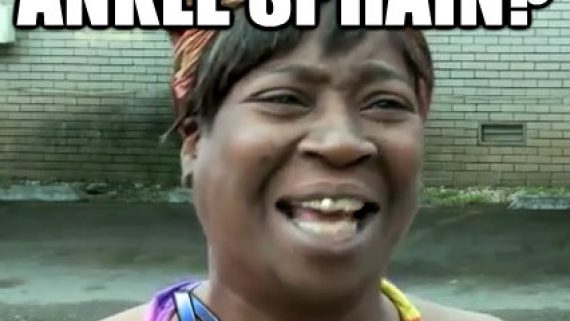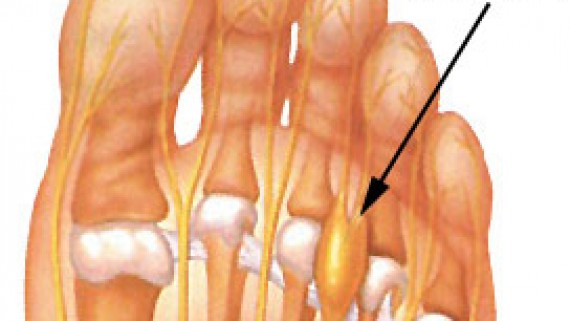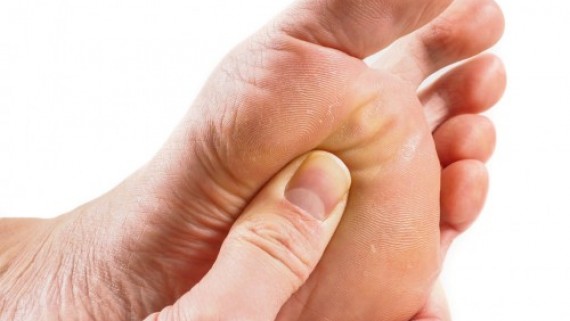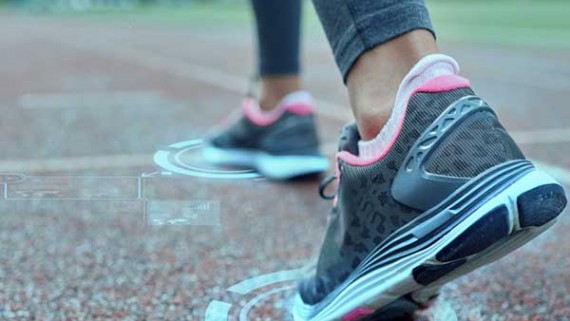Skin Cancer on the Foot?
As Podiatrists we often see moles and spots on people’s feet and toes. Most of the time they’re harmless, however occasionally we come across some that need further investigation.
This isn’t to scare you, but simply to inform you of the importance of checking your feet, even though they may not get exposed to direct sunlight.
It is true that skin cancers can form even where the sun don’t shine!
So what can you do?
- Check your feet every so often for moles and spots.
- Observe for any changes in size, shape or colour.
- Apply sunscreen to your feet when not wearing closed shoes.
- See your GP if you’re worried about a spot, or just want a professional opinion.
Rest assured, if you’re seeing one of us we will make sure to keep an eye on the spots you may have on your feet, and monitor them as we see you into the future.
For further foot advice, visit our website and make an appointment to see one of our friendly Podiatrists!
Ankle sprains are one of the most common leg injuries that podiatrists treat every day. You can twist an ankle during sport, at work or just minding your own business at home. Whether you have twisted an ankle for the first time or the 10th time, it is a good idea to book an appointment with your podiatrist.
We can help you from start to finish. From a thorough assessment of the damage to the ankle to getting you back on your feet and doing what you love best.
Assessment of ankle sprains is very important, as there may be very little damage to the structures in the ankle or there can be a complicated bone fracture requiring urgent attention. For this reason, your podiatrist may need to refer you for ultrasound or x-ray imaging. Depending on the severity, we may cast the ankle or fit you with a moonboot. If the sprain is minor, a good supportive pair of runners may be recommended.
Once an ankle sprain is healed, a rehabilitation program is key to getting back to your activities and preventing ankle injuries in the future. Your podiatrist will develop a customised strengthening program to improve your balance and ankle strength and monitor your progress on a regular basis.
Don’t let that ankle sprain keep you down, book an appointment with The Podiatry Group on 1300 847 226.
As the clouds (eventually) start to clear we are reminded that Spring is upon us. It’s time to dust off those runners, get outside and start enjoying a bit of sunshine. If your runners are looking a little bit too dusty or your feet are feeling sore or fatigued when wearing them, it may be time for an update.
At The Podiatry Group, we can perform a biomechanical assessment of your feet. We look at your foot posture and your gait (the way you walk) to determine which type of runner would suit you best. Many people aren’t aware that runners should be replaced every 6-12 months if you have a relatively active lifestyle. The reason for this is that the structure of the shoe wears away over time and use, and the foam of the shoe compresses. A new pair of runners is often all you need to get that spring back in your step.
If you have got supportive footwear already but do find your feet and legs feel sore or fatigued, our assessment can help determine other factors that might be contributing to your pain. We can look at your activity levels and training/work surfaces to build an exercise plan that works for you.
Our management plan may also include a stretching and strengthening plan, activity modification, foot orthotics and ongoing regular assessments to make sure everything is running smoothly- the same way we want you to run!
Book and appointment with us online or call us on 1300 847 226.
What is a Morton’s neuroma?
How did I get this?
If I had a Morton’s neuroma, what would it feel like?
What do I do next?
- Ice to the area
- Again ladies – avoid high heels!
- Check the width of your footwear. Try wearing wider shoes with a lower heel. Tighter or narrow footwear can compress and bunch the toes together. Your podiatrist can help you with footwear assessment and recommendations.
The exact cause of Morton’s neuroma can be different between patients. An accurate diagnosis can be made by a podiatrist.
- You may require orthotics to alleviate the forefoot pressure and mechanics in combination with metatarsal padding.
- Additional, ultrasound imaging maybe required to consider other diagnostic possibilities (as mentioned in first post).
- In more serve cases a course of anaesthetic and cortisone injections.
- Surgical removal of the neuroma as last resort.
Don’t forget, a neuroma is a result of a nerve that is being traumatised by a poorly functioning foot or footwear and treating the cause of this condition is paramount.
Metatarsalgia – Ball of Foot Pain
So many foot problems can occur in our forefoot. As podiatrists we treat a wide range of problems associated with forefoot pain and deformity. Metatarsalgia is a non-specific term or general umbrella term if you will, for pain in the forefoot or ball of the foot.
Discomfort is usually located beneath the balls of our feet and is typically a result of increased forefoot pressure.
Bunions, hammertoes, short metatarsal bones, stress fractures, plantar plate disruption, Freiberg’s infarction, capsulitis, intermetatarsal bursitis and Morton’s neuroma area some possible causes of metatarsalgia.
Today we are talking about intermetatarsal bursitis.
Intermetatarsal bursitis
What is bursitis?
An inflammation or irritation of the bursa. A bursa is a small fluid-filled sac that provides cushioning and reduces friction, between and around the joints of the forefoot. Irritation of the bursa can cause swelling and pain (bursitis). The intermetatarsal bursae are located on the bottom of the foot near the base of the toes.
Bursitis can also affect other parts of the body – back of the heel/Achilles tendon, the knee, hip, shoulder and elbow.
How did I get this?
Generally, bursitis can occur through injury or repetitive motion causing irritation and inflammation. They can become irritated when one metatarsal bone takes more load than others.
Wearing narrow or excessively worn footwear during the day and different sporting activities can increase your chance of developing bursitis. Other factors can include;
- Overuse or excessive pressure on the forefoot
- Stress from abnormal foot mechanics
- Injury from a fall or hit to the area
- Less commonly due to certain types of arthritis; rheumatoid arthritis, gout, psoriatic arthritis
If I had bursitis, what would it feel like?
Friction can cause the space between the tendon, bone and skin to become inflamed – causing swelling, pain and possibly redness of the surrounding area.
Irritation and restricted movement of the affected joint may be evident and certain footwear or activities may exacerbate pain.
What do I do next?
- Apply ice to the area – this can help reduce inflammation
- Rest and avoid painful activities
- Non-steroidal anti-inflammatories if advised by your pharmacist
- Orthotics
- Footwear changes, avoid high heels!
- Reduce the amount of pressure being place placed on the bursa through off loading
- In chronic cases, injections of local anaesthetic and corticosteroid may be required in combination with padding
It’s important to attend a podiatry consult for assessment to determine the root cause, as other injuries can produce similar symptoms. Podiatrist may advise you on appropriate shoes and can also add padding to off load the pressure, prescribe orthotics and refer for any imaging that may be needed to rule out other conditions.
Contact us on 1300 847 226 or make an appointment online to speak with one of our friendly podiatrists about helping you get back on your feet sooner!
Welcome To The Team!
Welcome to the newest member of our podiatry team: Tanya Contis.
Tanya grew up in country Victoria, and graduated from La Trobe University with a Bachelor of Podiatry. Since then she has been growing her career in private practice and enjoys working across all areas of Podiatry, in particular general podiatric care, diabetic foot management and prevention, injuries and paediatrics.
Tanya takes a very holistic approach to foot care, acknowledging that happy feet go foot in foot with a healthy you.
For a number of years, Tanya worked in a technical footwear store run by podiatrists and has a strong appreciation for and extensive knowledge in footwear fitting and footwear education.
When Tanya is not in clinic, her own feet are leading her far and wide, down many European cobble-stone streets and up many beautiful mountain sides of New Zealand and beyond.
To book an appointment with Tanya or one of our friendly podiatrists please click here.
Free Podiatry Footwear Assessment
The Podiatry Group are offering Free Podiatry Footwear Assessments at Nicho’s Intersport in Warragul.
If you have trouble picking the right runner or shoe for your feet, or have any podiatry footwear related questions come on down and one of our podiatrists will assist you.
The Podiatry Group will be at Nicho’s Intersport (21 Smith Street Warragul) on Tuesday November 10th 4:30-5:30pm.
To make an appointment contact Nichos’ Intersport on 5622 3844.
Click on Nicho’s Intersport to check out the details of their store.

